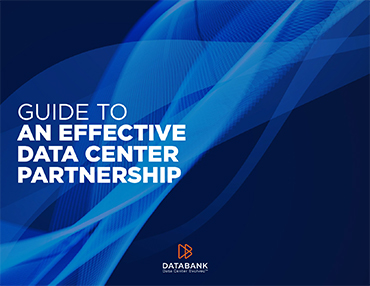All modern businesses need access to data centers. Even the most traditional businesses have to make use of online services. Modern businesses, particularly large ones, are highly reliant on data centers.
That being so, it makes sense for everybody involved in business to have at least a basic understanding of data centers. With that in mind, here is a beginner’s guide to data centers and their core concepts.
What are data centers?
Data centers are facilities equipped with computing and networking resources for storing, processing, and managing digital data. Generally, the term “data center” refers to a centralized facility designed to cope with significant volumes of data and advanced data processing.
There are, however, also “edge data centers”. These are small-scale facilities designed for simpler processing tasks on lower volumes of data. These data centers are typically situated near to where data is generated and/or used. This tends to be at the edge of a network, hence the name.
How data centers are implemented
Some data centers (both traditional and edge) are owned and run by the organizations that use them. These days, however, it is increasingly common for organizations just to buy access to data center infrastructure.
Colocation services allow businesses to deploy their own equipment in managed data center facilities. Public cloud services allow businesses to use infrastructure, platforms , and/or software on an as-a-service basis. This means the vendor takes care of all aspects of data center management.
Components of data centers
Here are the five main components of data centers.
Servers: Servers execute computational tasks, host applications, and store data. Data centers often deploy various types of servers including rack servers, blade servers, and specialized servers optimized for specific workloads.
Networking equipment: Networking equipment facilitates connectivity between servers, devices, and users. Data centers usually invest in the best networking equipment available at any point in time. For example, currently, data centers will use fiber optic cabling and 5G mobile networking as much as they can.
Storage systems: Data centers typically utilize a variety of storage systems for different purposes. For example, hard disk drives (HDDs) may be used for slow-access storage. Solid-state drives (SSDs) will be used for fast-access storage. Many data centers implement storage area networks (SANs). SANs enable centralized storage provisioning and management, facilitating efficient data storage and retrieval.
Power infrastructure: Power infrastructure provides the electrical power necessary for data center operations. To protect against the impact of disruptions, data centers typically implement redundant power infrastructure. This usually consists of (UPS) systems and backup generators. UPS systems provide backup power in case of utility outages, while backup generators ensure continuous operation during prolonged power failures.
Climate-control infrastructure: Although the equipment used in data centers has become more energy-efficient over the years, it still generates a lot of heat. This means that data centers need robust cooling systems. They also need systems to manage humidity as excess moisture can seriously damage equipment.
The role of data centers in IT infrastructure
Data centers play multiple roles in IT infrastructure. Here are five of the main ones.
Data storage: Data centers serve as repositories for digital data. They utilize various storage technologies such as hard disk drives (HDDs), solid-state drives (SSDs), and cloud storage solutions to accommodate diverse data types and workloads.
Data processing: Data centers provide the computational power necessary for processing and analyzing data. Through high-performance servers, parallel processing techniques, and distributed computing frameworks, they enable efficient data processing for tasks such as analytics, machine learning, and real-time decision-making.
Connectivity: Data centers facilitate connectivity by hosting networking infrastructure that interconnects servers, devices, and users. They employ high-speed networking equipment, redundant network paths, and peering agreements with ISPs to ensure reliable and low-latency communication between distributed systems and end-users.
Security and compliance: Data centers implement robust security measures to safeguard sensitive data and infrastructure from unauthorized access, cyber threats, and data breaches. These measures include access controls, encryption, intrusion detection systems (IDS), and compliance with industry regulations and standards (e.g., GDPR, HIPAA).
Disaster recovery and business continuity: Data centers play a critical role in disaster recovery planning and business continuity by implementing backup and replication strategies. Through data redundancy, offsite backups, and failover mechanisms, they mitigate the impact of unforeseen events such as hardware failures, natural disasters, or cyberattacks, ensuring minimal downtime and data loss.
Understanding uptime
As data centers are core to business operations, it’s essential that they operate as intended as much as possible. A data center’s ability to maintain operations is known as its uptime.
When organizations run their own data centers, they are responsible for maintaining uptime. When organizations use third-party data centers, the vendor usually provides an uptime guarantee. This is typically expressed as a percentage. The current industry standard is 99.999%. Some data center vendors offer even higher guarantees.
As always, however, it’s important to read the fine print. In particular, you need to understand exactly what level of service is being guaranteed. You also need to know the consequences for the vendor if the guarantee is breached.







